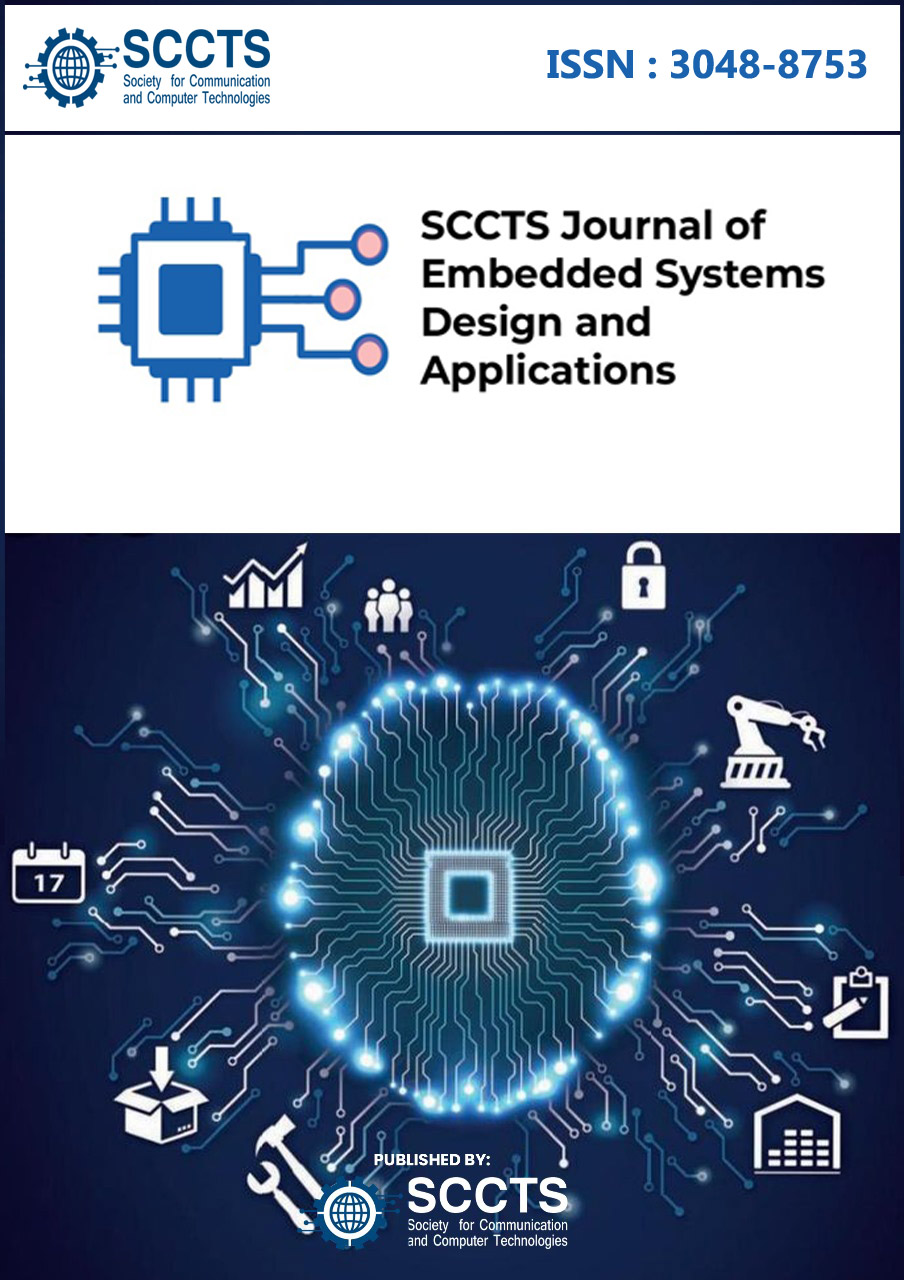IoT-Based Embedded Systems for Precision Agriculture: Design and Implementation
DOI:
https://doi.org/10.31838/ESA/02.02.03Keywords:
Embedded System Debugging; Advanced Embedded Algorithms; Digital Signal Processing (DSP); High-Level Synthesis for Embedded Systems; Embedded Systems TestingAbstract
Internet of Things (IoT) technologies are turning the page for the agricultur
al sector. Precision agriculture is an increasingly important consideration as
global food demand climbs and environmental challenges become ever more
pressing, focused on maximization of crop yields, conservation of resources,
and promotion of sustainable farming practices. The essence of this agricul
tural evolution relies on IoT based embedded systems that are redefining
how farmers track, analyze and manage their operations. In this article, we
consider the design and implementation of these novel systems and what
it means for the possible future of modern agriculture. Precise means of
technology harness in agriculture crop management, resource allocation and
decision making. IoT devices, sensors, and data analytics allow farmers to
achieve a level of visibility into their fields that was otherwise unimaginable,
helping them choose better and fill their fields at highest productivity while
minimizing impact on the environment. IoT based embedded systems inte
gration in agriculture is paradigm shift from real time monitoring, automated
control and data driven strategies, which were never possible in previous
times. While preparing for this journey to IoT based embedded systems for
precision agriculture, we will discover how all this works and how things
were put together. We deconstruct the key building blocks that make these
systems both powerful and practical for use in modern farming operations:
sensor networks and cloud computing, remote management interfaces, and
the machine learning algorithms that make it all possible.





